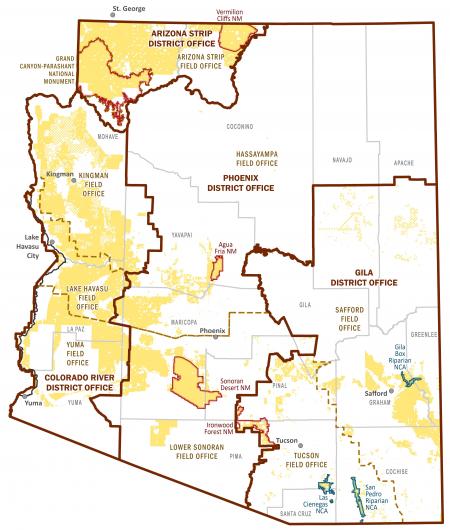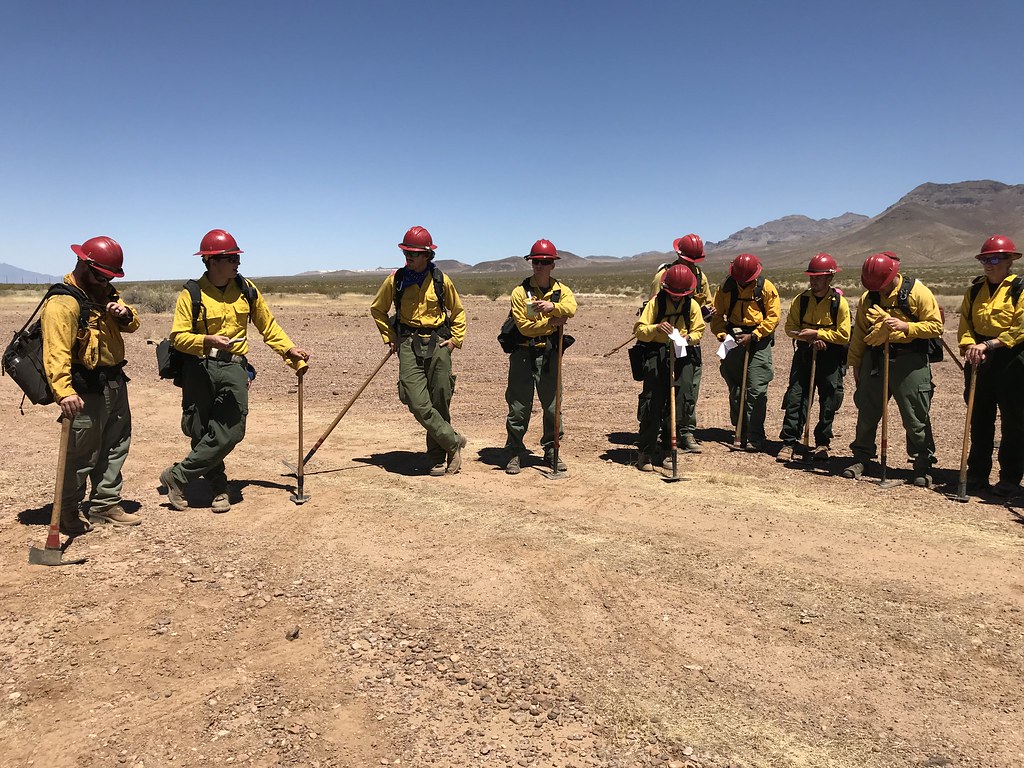Arizona Fire Program
The Bureau of Land Management (BLM) is responsible for fire management on 12.1 million acres of BLM-managed public lands across Arizona and fire protection on a total of 14.6 million acres as a result of protection agreements with Bureau of Indian Affairs (BIA), Bureau of Reclamation (BOR), and the Department of Defense (DOD). The agency’s professional fire management staff provides wildland firefighting for protection of natural resources, as well as using fire as a tool to improve the health of the land. Naturally ignited wildland fires are also managed and utilized, as appropriate, to accomplish resource and healthy lands objectives for specific areas, as identified in land management plans.
In fire management, the number one priority for BLM Arizona is firefighter and public safety. As a cooperator with other federal, state, and local agencies and firefighting departments, the BLM assists its partners in wildland firefighting and all-hazard incidents such as earthquakes, floods, and hurricanes.
BLM Arizona's fire program is comprised of the following major components:
- Wildland Fire Operations
- Aviation
- Fuels Management
- Fire Mitigation & Community Assistance
- Fire Prevention & Education
- Fire Investigation & Trespass
Each fire zone provides initial attack and extended attack through dispatch offices which are run by an interagency staff of professionals. Each district is supported by fire and aviation management program staff at the state office, and has staff responsible for each fire program component.
- Arizona Strip District Fire Zone
- Arizona Strip Field Office and Grand Canyon-Parashant National Monument
- Colorado River District Fire Zone
- Kingman, Lake Havasu, and Yuma Field Offices
- Gila District Fire Zone
- Safford and Tucson Field Offices
- Phoenix District Fire Zone
- Hassayampa and Lower Sonoran Field Offices
Each district fire zone is supported by an interagency dispatch center, airtanker base, as well as other established aviation facilities. The Arizona program supports 2 helitack modules; Weaver Mountain, based on the Phoenix District, and Moki, on the Arizona Strip District. Single-engine airtankers are supported by a year-round base in Safford, hosted by the Gila District, and a seasonal base in Kingman, hosted by the Colorado River District.
Arizona Strip District [AZ-ASD]
Office: 435-688-3200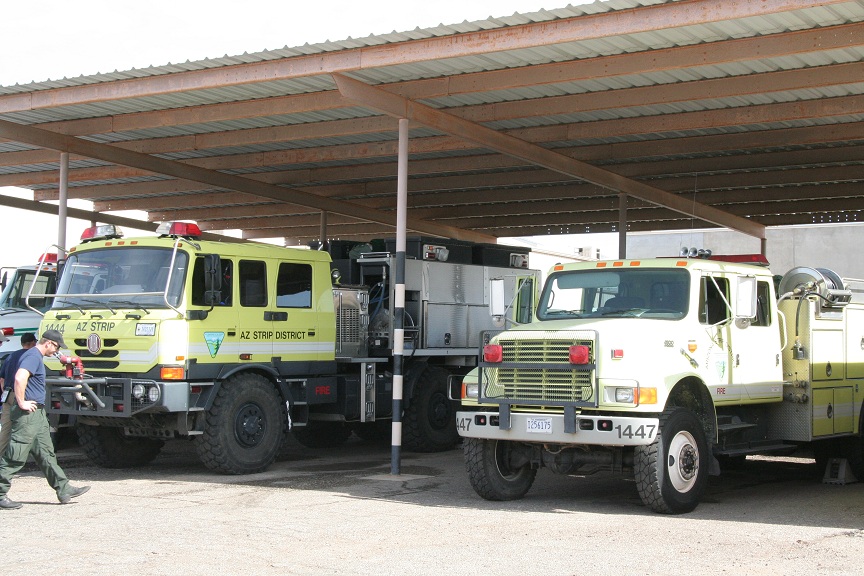
Dispatch: 435-865-4600 or
Report a Wildfire: 435-865-4611
Dispatch Website: Color Country Interagency Fire Center
More than 2.7 million acres of BLM-administered public lands lie within the area known as the “Arizona Strip,” located in the northern portions of Coconino and Mohave counties, north and west of the Colorado River. The Arizona Strip District Fire Management Program is an interagency effort between the BLM and the Dixie National Forest in Utah.
There is a broad range of resource issues involving fire within this region, including:
- vegetation classification;
- various management considerations for fighting fires in areas such as wilderness, desert tortoise habitat and grazing areas;
- access to remote locations;
- understanding the resources values to be protected; and,
- the overall management objectives for the environment.
The fire season on the Arizona Strip usually runs from May through early October, with the number of fires peaking in June and July. Lightning is the most common cause of fires, accounting for about 81 percent of all fires burning 96 percent of the total acres. Nearly 90 percent of these fires burn less than 10 acres, and less than two percent consumed more than 1,000 acres.
The Arizona Strip District is home to the Moki Interagency Helitack Crew.
Colorado River District [AZ-CRD]
Offices: 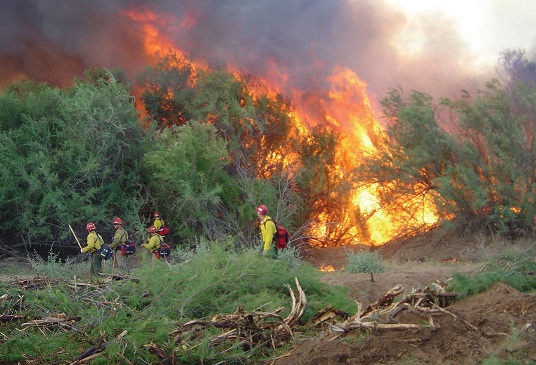
- Colorado River District/Lake Havasu Field Office: 928-505-1200
- Kingman Field Office: 928-718-3700
- Yuma Field Office: 928-317-3200
Dispatch: 928-777-5700 (24 hours)
Dispatch Website: Prescott Interagency Fire Center
BLM's Colorado River District encompasses the Kingman, Lake Havasu, and Yuma field offices.
The vegetation in this management unit is dominated by desert shrubs, trees, and cacti. Deep upland sites have overstories of mesquite, palo verde, and ironwood, with understories of perennial and annual grasses and forbs. In the higher elevation of the Hualapai Mountains, pinyon and ponderosa pines dominate the landscape, while the Colorado River corridor is comprised of salt cedar, willows, cottonwoods, and other riparian vegetation.
About 98 percent of fires in this zone are human caused and generally occur between February and October. Most of these fires occur near main travel corridors and rivers. The 20-year annual average for all fire causes equates to 36 fires per year, burning an average of 3,000 acres per year.
The Colorado River District Fire Management Zone is a full participant in the Central West Arizona Interagency Fire Management Zone. In this cooperative effort, a variety of agencies have joined forces to fight wildland fires. Participants include the BLM, U.S. Forest Service, U.S. Fish and Wildlife Service, Bureau of Indian Affairs, National Park Service, and Arizona State Forestry.
Gila District [AZ-GID]
Offices: 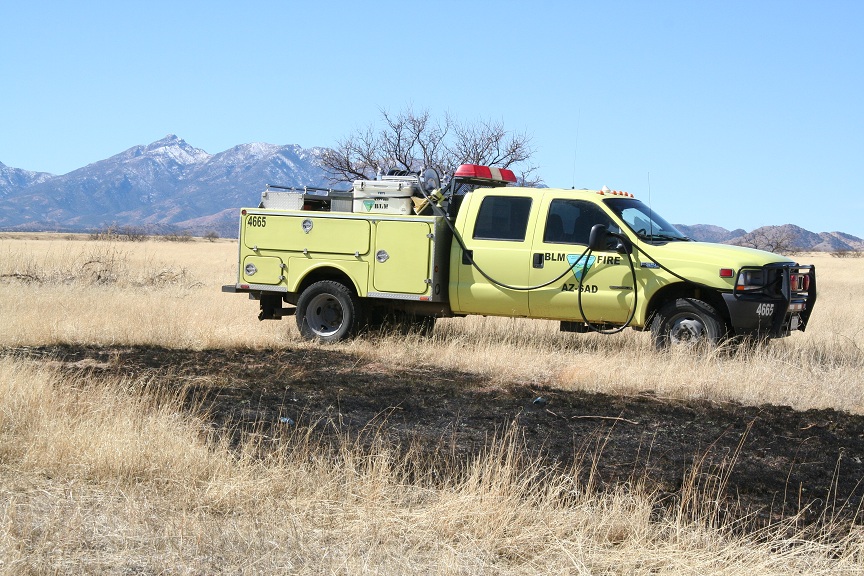
- Gila District/Tucson Field Office: 520-258-7200
- Safford Field Office: 928-348-4400
- Aravaipa Crew: 520-439-7010
Dispatch: 520-202-2710 (24 hours)
Dispatch Website: Tucson Interagency Fire Center
Arizona’s Gila District Fire Zone contains about 2.4 million acres and covers the Tucson, Safford, and San Pedro offices.
The zone sees an average of 27 fires each year on BLM public lands, with about 3,000 acres consumed per year. A typical fire season runs March through September. Lightning strikes cause 60 percent of the fires that occur within the zone.
The Gila District Fire Management Zone is a full participant in the Southeast Arizona Interagency Fire Management Zone. In this cooperative effort, several agencies have joined forces to fight wildland fires. Participants include the BLM, U.S. Forest Service, U.S. Fish and Wildlife Service, Bureau of Indian Affairs, National Park Service, and Arizona State Forestry.
The Gila District Fire Management Zone is home to the Aravaipa Veterans Hotshot Crew. Their offices are located within the U.S. Army's Fort Huachuca, and the crew is comprised predominantly of military veterans. They achieved Interagency Hotshot Crew (IHC) certification in the fall of 2019.
Phoenix District [AZ-PHD]
Office: 602-867-5400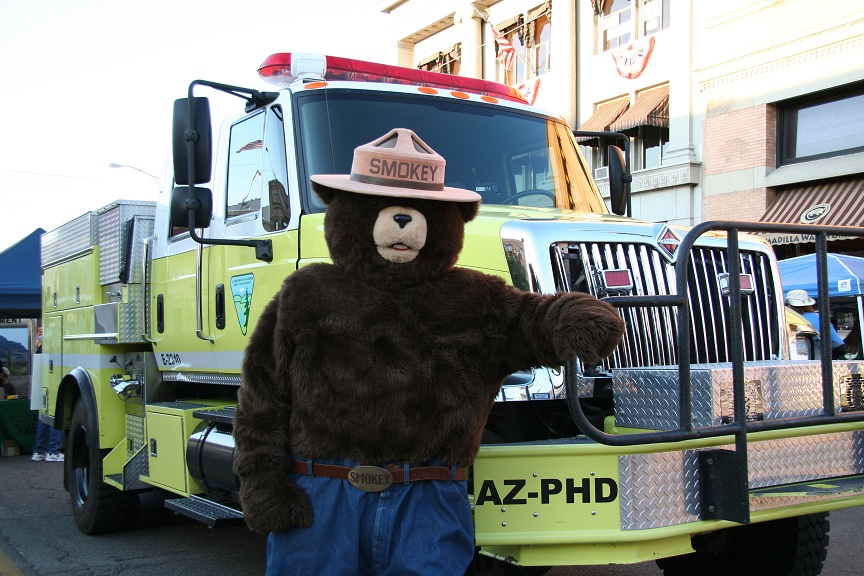
Dispatch: 928-777-5700 (24 hours)
Dispatch Website: Prescott Interagency Fire Center
The Phoenix District Fire Management Zone is administered by the BLM’s Hassayampa and Lower Sonoran field offices. The zone’s fire program is responsible for the protection of nearly 2.4 million acres of BLM public lands and an additional 1.1 million acres within the Barry M. Goldwater Air Force Training Range.
There are many fuel types within this region, including the Sonoran Desert ecosystem, grasslands, desert oak/chaparral with intermixed manzanita, desert shrub and ponderosa pine. Fire season usually begins in mid-March and ends in early September, with an annual average of 61 wildfires, burning an average of 9,000 acres of BLM public lands each year.
The Phoenix District Fire Management Zone is a full participant in the Central West Arizona Interagency Fire Management Zone. In this cooperative effort, several agencies have joined forces to fight wildland fires. Participants include the BLM, U.S. Forest Service, U.S. Fish and Wildlife Service, Bureau of Indian Affairs, National Park Service, and Arizona State Forestry.
The Phoenix District is home to the Weaver Mountain Helitack Crew.

